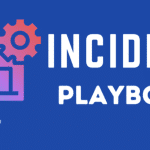
Cloud Security: A Soaring Sky with Hidden Storms ✈️️
January 16, 2024
Cyber Attack? Don’t Panic, Play the Game: Your Essential Incident Response Playbook
January 17, 2024Windows users, buckle up! A new and dangerous threat called Phemedrone Stealer is lurking in the shadows, targeting your precious data and posing a serious risk even to systems protected by Windows Defender.
What is Phemedrone Stealer?
Imagine a digital pickpocket, silently snatching your passwords, login credentials, and other sensitive information from your Windows PC. That’s Phemedrone Stealer in a nutshell. It operates by exploiting a recently discovered vulnerability in Windows Defender SmartScreen, allowing it to bypass security checks and wreak havoc unnoticed.
What’s at stake?
If Phemedrone Stealer infects your system, it can steal a variety of sensitive data, including:
- Login credentials: Passwords for email, bank accounts, social media, and more.
- Financial information: Credit card numbers, bank account details, and other financial data.
- Personal information: Names, addresses, phone numbers, and other personally identifiable information.
This stolen data can then be used for various malicious purposes, such as:
- Identity theft: The attackers can use your stolen information to impersonate you and commit fraud.
- Financial theft: They can use your stolen credentials to steal money from your bank accounts or make unauthorized purchases.
- Blackmail: The attackers may threaten to release your stolen data unless you pay them money.
The good news: Microsoft has released a patch to fix the vulnerability exploited by Phemedrone Stealer. However, even with the patch installed, you could still be at risk if:
- You haven’t installed the latest updates.
- You click on suspicious links or attachments in emails.
- You download software from untrusted sources.
How to protect yourself:
Here are some steps you can take to protect yourself from Phemedrone Stealer and other malware threats:
- Install the latest Windows updates: This is the most important step you can take to ensure your system is protected against known vulnerabilities.
- Be cautious about clicking on links and attachments: Don’t click on links or open attachments in emails from unknown senders or senders you don’t trust.
- Only download software from trusted sources: Avoid downloading software from untrusted websites or peer-to-peer networks.
- Use a reputable antivirus and anti-malware software: This will provide an extra layer of protection against malware threats.
- Back up your data regularly: This will help you recover your data if it is lost or stolen by malware.
Stay informed: Keep yourself updated on the latest cybersecurity threats by following reputable security blogs and news websites.
Remember: Cybersecurity is a shared responsibility. By taking these steps, you can help protect yourself and others from the dangers of malware.
Spread the word! Share this post with your friends and family to help them stay safe from Phemedrone Stealer and other malware threats.
#WindowsSecurity #PhemedroneStealer #Malware #Cybersecurity #StaySafeOnline




